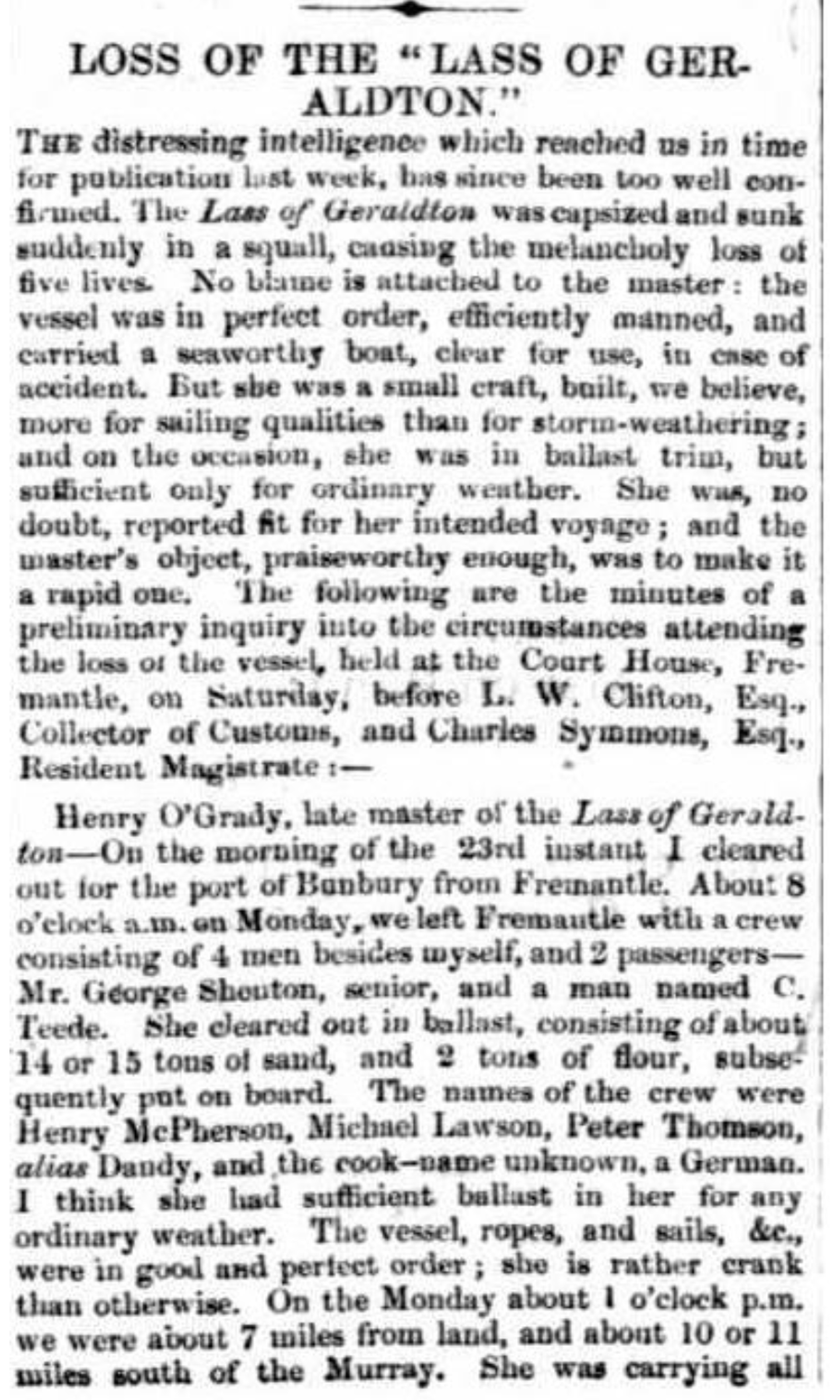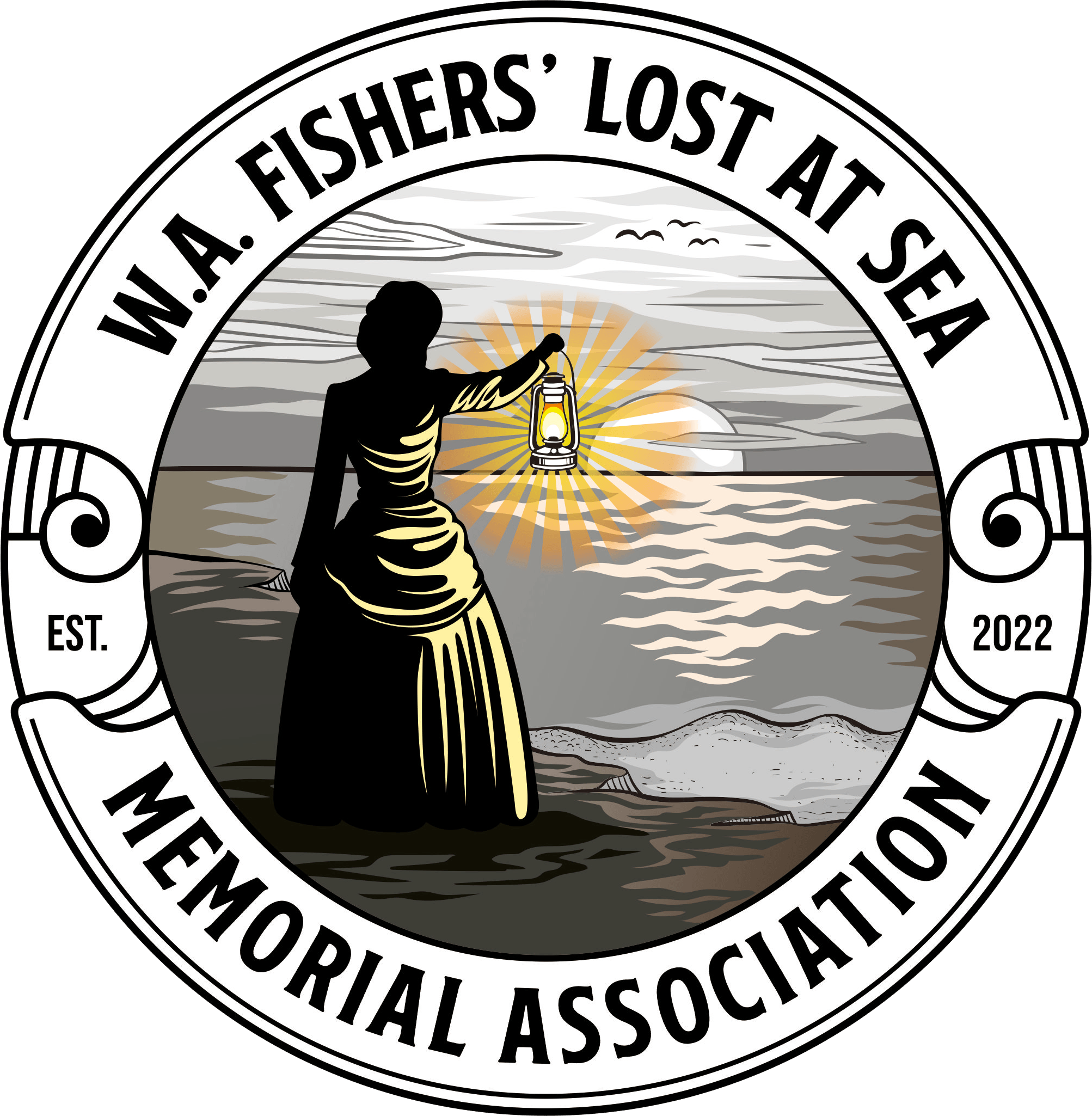Lass of Geraldton
Vessel Name: Lass of Geraldton
Henry McPherson
Michael Lawson
George Shenton
Mr. Teede
Boat built from the wreck of Africa; All wrecked; All Persons Lost at Sea
23 February 1867
** Please Also Refer to the Albatross Story **

The Inquirer and Commercial News, Wednesday 3 April 1867
Lass of Geraldton, Albatross and the Mary Ann were built from the timbers salvaged from the hull of the African, a 780-ton cargo ship which foundered on the reef outside Champion Bay on 1 January 1863. William Garrard bought the timber to build his three boats and set about their construction in Geraldton. All three boats met with tragic ends.
Lass of Geraldton’s crew members were Henry McPherson, Michael Lawson, Peter “Dandy” Thompson and a German cook. Her master was Henry O'Grady (known as Harry) and Lass of Geraldton was his first command. There were passengers aboard also; Mr George Shenton and Mr Teede. Mr Shenton was a prominent Perth merchant with interests in Geraldton. Mr Teede was a school master in Bunbury.
The Lass of Geraldton capsized in a squall off Mandurah, steaming from Fremantle to Bunbury in ballast on 23 February 1867. McPherson, Lawson and the two passengers were drowned.
Harry reported the boat heeled over before it sank. He climbed onto the main boom, and instructed his crew to get the dinghy clear, but it was under water, lashed securely to the deck. Harry attempted to release the dinghy, without success. The crew abandoned ship.
Once in the water, he pushed a floating mattress under George Shenton’s shoulders; George was already unconscious. Harry swam to get a hatch to lay Shenton’s head on although he showed no sign of life. Harry swam to the shore, with Henry, Dandy and the cook following. Reportedly Harry remained in the water for approximately five hours before reaching the shore, with Dandy another hour behind him.
The Master, Harry O’Grady and Dandy survived. Harry and Dandy made the shore and went directly to the Mandurah Police station to report the wreck. Police records indicate they arrived at 10am on 26 March 1967.
Fremantle Police set out for Mandurah at 6pm, and at2.30am Harry returned to the area where the Lass of Geraldton was lost to search for survivors with several others, including Dr Millman, Mr Holmes, Mr Keen and the Mandurah Police. They found the boat hatch Harry used to get to shore, and one other hatch.
Over the next four days the Lass of Geraldton could be seen approximately two miles from the shore in one fathom of water with its mast above the waterline. A whaleboat was launched to check the state of the wreck. It could not be salvaged. None of the dead were found.
The Mary Ann was leaking, and driven ashore in May 1865, while steaming to Champion Bay.
Albatross was lost on 25 June 1868 when she was returning from a rescue mission to refloat the stranded Sea Bird and Twinkling Star at Port Gregory. She boarded members of a whaling party for the return voyage to Geraldton. She was swamped in heavy seas near Irwin Point and rolled over in a trough when a dumb breaker swept over the top of her. There were 11 souls on board and eight of them drowned. (see the Albatross story).
Those who were superstitious about using salvage from wrecks merely commented that it was no surprise the cutters met with untimely and tragic ends. The loss of the cutters also fed into the growing public fear of the Midwest coast, with the waters around Geraldton being labelled the ”most sinister of the death-dealing coast” by the West Australian Newspaper in 1936. The Advertiser newspaper of Fremantle quoted a poet who wrote
Were I to curse the man I hate from youth till I grow grey,
Oh, might he be condemned by Fate to live in Champion Bay.
